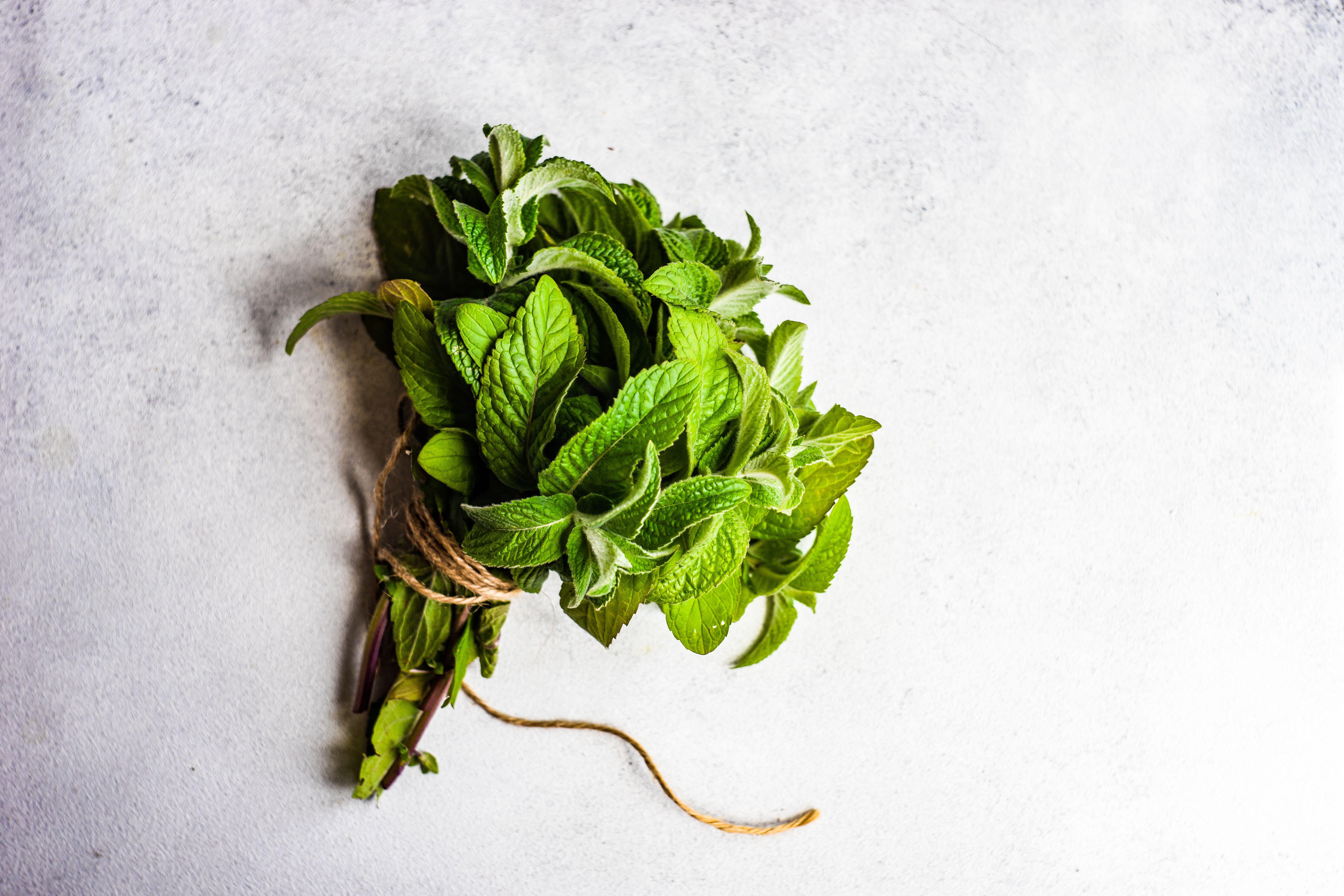
There are only a few simple steps you need to know for how to grow mint indoors. And because this plant is a - relatively - easy one to cultivate, it's part of a growing trend for biophilic kitchens, for using indoor plants as sculptural works of art in their own right.
And mint is a beauty. Bright green leaves in perfect ovals, it has a compellingly strong shape to it, contrasting the softness of basil and cilantro. If you're starting a herb garden off then these three are all you need for modern kitchen - perhaps a little thyme, too.
When I wrote and researched my first book, The Herb and Flower Cookbook, mint was the first herb I grew. I was amazed at how easy it was, and how many varieties there were - at one point I had strawberry mint, pineapple mint, chocolate mint, apple mint and spearmint next to my common garden mint. I now just have two pots of the regular plant - one indoors, one out - that have kept going for nearly 18 months, surviving winters and sun.
Beware - buying a mint plant from a grocery store is unlikely to be the best way to begin. Either start off your mint plant off from seed, or from a garden center.
And once you're all set, there are just a few tricks you need to keep mint looking perky, fresh, and your food bursting with flavor all year.
The Livingetc newsletters are your inside source for what’s shaping interiors now - and what’s next. Discover trend forecasts, smart style ideas, and curated shopping inspiration that brings design to life. Subscribe today and stay ahead of the curve.
How to grow mint indoors

1. Choose the right pot

Mint has large roots that can fill a big container, so it's good to super-size your pot as much as you have space for - it will need to be a minimum of 12 inches deep. Terracotta, or a pot with good drainage is ideal - mint hates to be sat in deep water.
At the Salone del Mobile furniture fair in Milan, Ethimo debuted the Alium pot by Studio Pepe that is made from concrete and would sit comfortably on a kitchen ledge, adding a little industrial charm.
2. Plant the seeds
If you're growing mint from scratch - and it really is the most satisfying method - then first fill your pot with soil. Make little dips in the soil with a pencil, about two inches deep, and put one seed in each dip, making sure each dip has two inches of space around it.
Cover the seeds with soil, lightly water and place in a sunny spot.
3. Water occasionally
Because mint doesn't need to be flooded, it's important not to over-water. Before seeds sprout, water lightly every two to three days.
Once mint seeds have sprouted, and started to look strong, they need water only every four to five days, or if they are starting to droop (this can happen during really hot months).
4. Pick the leaves regularly

One of the best things about mint is how quickly it regenerates. One of the worst thing about mint is how quickly it bolts if it's not picked often enough. Left to its own devices, the stalks will get too long and thin, they'll droop and the leaves will start to go yellow and brown.
Once the mint is around ten inches tall, pinch the top two leaves off with your fingers. This will encourage the stems to grow outwards, not up. Keep doing this, every time they start to look anywhere close to ten inches tall.
You can pick mint leaves as often as you need them - they will grow back in around a week. It's good to have a couple of plants going at any one time so as to have a constant supply.
How to use mint to eat and drink
Mint is such a versatile herb - it adds a zingy lift to salads when the leaves are plucked and sprinkled over the top. It can be blitzed to make a pesto, blended with sugar, lime and rum to make a mojito, or simply added to a mug with boiling water to make mint tea.
Mint works particularly well with other fresh flavors like cucumber and lemon, or to infuse boiled vegetables like new potatoes.
The editor of Livingetc, Pip Rich (formerly Pip McCormac) is a lifestyle journalist of almost 20 years experience working for some of the UK's biggest titles. As well as holding staff positions at Sunday Times Style, Red and Grazia he has written for the Guardian, The Telegraph, The Times and ES Magazine. The host of Livingetc's podcast Home Truths, Pip has also published three books - his most recent, A New Leaf, was released in December 2021 and is about the homes of architects who have filled their spaces with houseplants. He has recently moved out of London - and a home that ELLE Decoration called one of the ten best small spaces in the world - to start a new renovation project in Somerset.